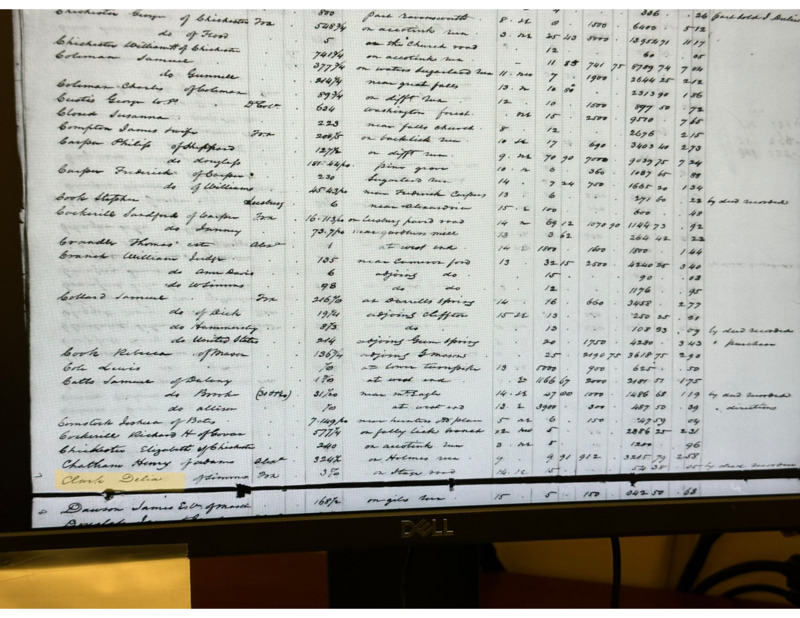Delia Clark(e)
Though Louisa is the focal point of this exhibit, her story cannot be told without mentioning her mother, Delia Clark (sometimes spelled Clarke).
From Census information, there is a very limited understanding of who Delia was. She appeared in the 1830 Census, but the record is extremely sparse. It is unintelligible for the most part, with only a few marks able to be discerned. From this information, it can only be seen that there were four people in Delia’s household. All described as “colored,” there was one male under age 10, one male 10-23, one female 10-23, and one female 55-99. This was likely Delia and her children, and the female 10-23 was probably Louisa.
The more detailed story of Delia in records begins in 1829. At the Historic Records Center, a land deed can be found from this same year in which Delia is received land from a man by the name of William Simms. According to Fairfax Circuit Court Historic Records Center staff, Simms was known as a prominent grantor in the Mason Neck community. The property was approximately 3 acres, and it is the same property on Telegraph Road that later belonged to Louisa and her family. The 1829 land deed is the earliest deed associated with earliest ownership of the property. The corresponding land tax book entry from 1830 also is in Delia’s name. Aside from this deed, no other recorded documents mentioning Delia were found at the Historic Records Center – unless you skip to the year 1948.
The 1948 deed associated with the latest ownership of the property, which is shown on the previous page, details the transfer of the Telegraph Road property from Louisa’s family to a man named Courtland H. Davis for a $650 selling price. On the third page of this deed, Delia is mentioned. It describes the land as “being the same land formerly carried under the name of Delia Clark, a free woman of color.” 1948 was long after the death of Louisa, let alone Delia, so it is interesting that Delia was still being referred to posthumously as a free woman of color. The reasoning behind this is that African Americans who were free prior to the abolition of slavery needed their status to be documented since it was so unusual. Delia was freed in 1829 and possibly even earlier, which was extremely uncommon, so she retained her status as a free woman of color even in death.
Ancestry.com. 1830 United States Federal Census [database on-line]. Provo, UT, USA: Ancestry.com Operations, Inc., 2010.
Fairfax Circuit Court Historic Records Center Deed Books
Land tax records in Mount Vernon Magisterial District for the year 1830, Fairfax Circuit Court Historic Records Center
By: Alyssa Turner


